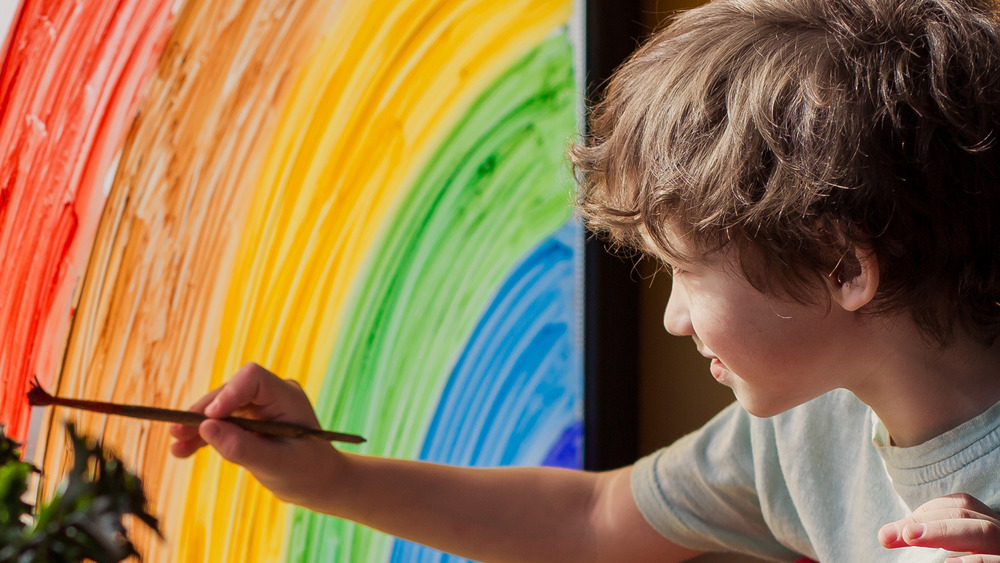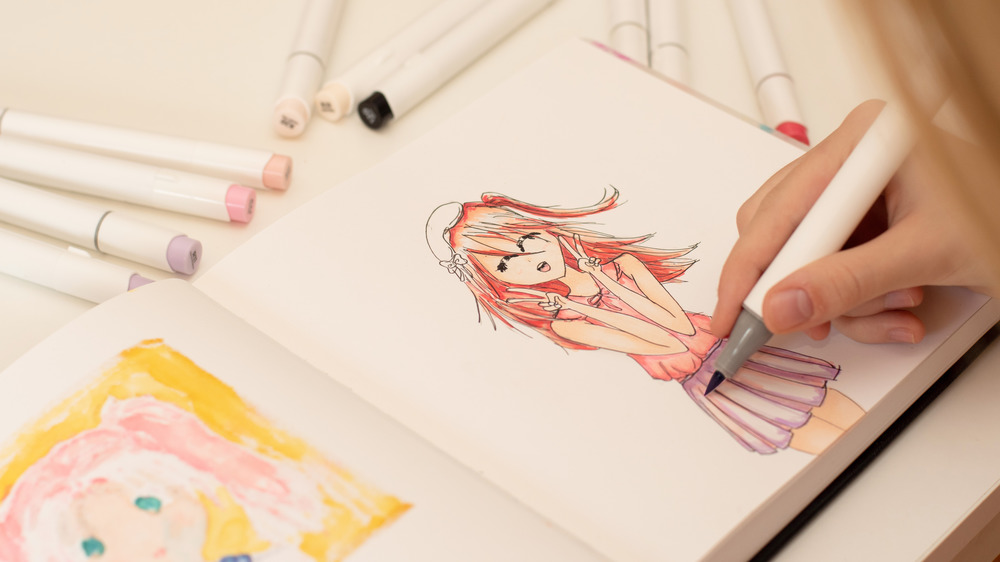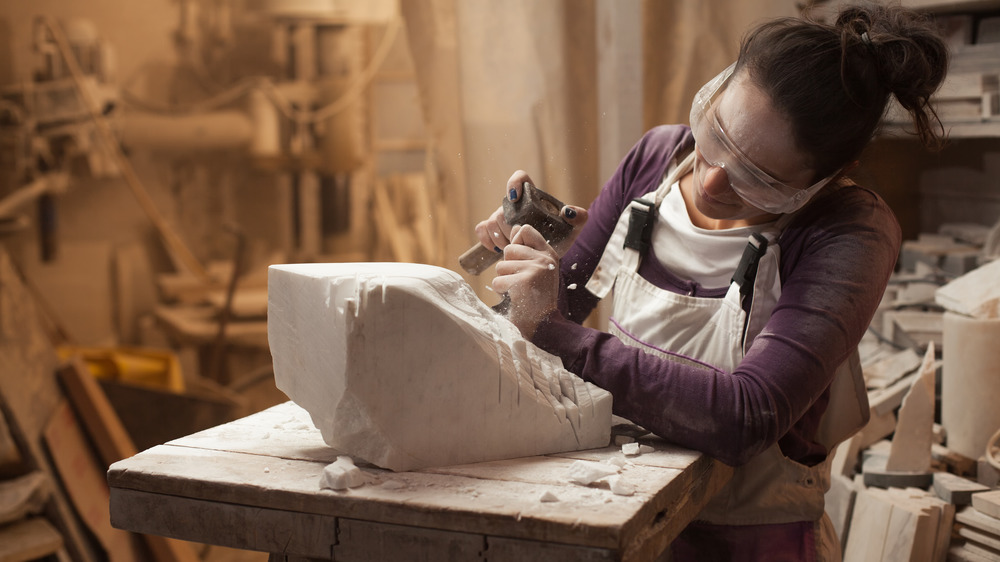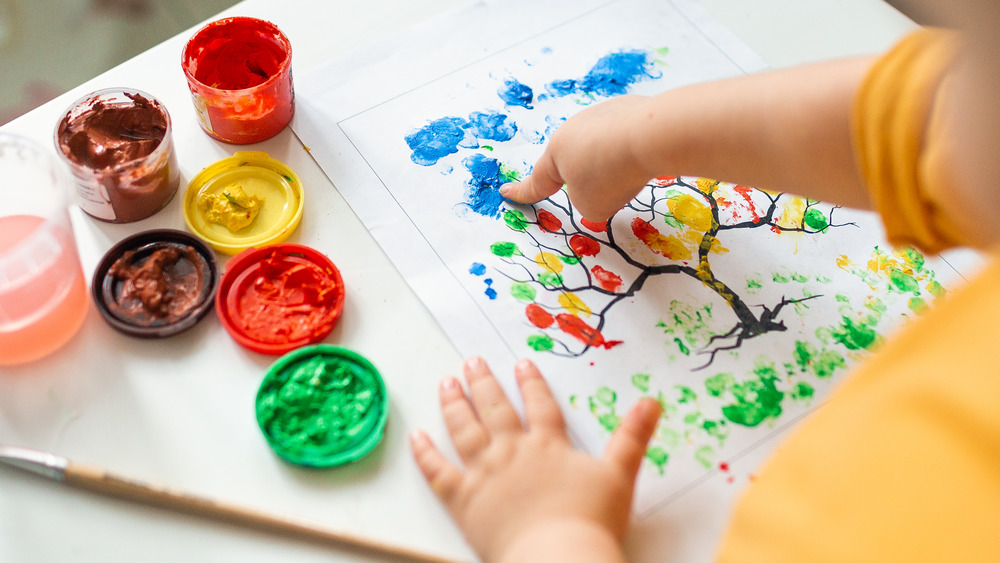This Activity Will Boost Your Mood In Quarantine
While we may no longer be in an officially-sanctioned quarantine period, there's no denying the fact that COVID-19 is still affecting every aspect of our lives. It's been almost a year now, and although vaccination is bringing new hope, it's still going to be a while before we get back to life as we knew it, when pandemics seemed like a relic from the dark days of history. When you add in the fact that most of the country has been experiencing some pretty crappy winter weather as well, there's a high likelihood that cabin fever may be setting in hard.
What can you do to keep your spirits up when you can't get out of the house? After 11+ months under semi-lockdown, even activities that seemed fun at the beginning (baking, working out, early happy hours, and ... err, other things) have begun to pall. There's one thing you can do, however, that can lower your stress, and perhaps even get you into the kind of pastime that could prove to be a lifelong passion: Pick up a paintbrush (or a pencil). As a 2016 Drexel University study (via Taylor & Francis) showed, creating art lowered the levels of stress hormones in 75 percent of subjects. Okay, we're sold. But how to begin? In order to find out, The List turned to character designer and illustrator Ross Tran, an artist who's considered to be the Bob Ross of YouTube, who gave us an exclusive interview.
In order to make art, you'll need the right frame (of mind)
What is the first thing you need if you want to create art? Should you go shopping for supplies, or perhaps look up some YouTube tutorials? Will you need to sign up for lessons? And should you study up on the lives and works of famous artists? While you can do any all of these things should you feel so inclined, the first step toward getting in touch with your inner Picasso begins in your own mind.
Tran told us that, in order to create art, you need to be open-minded. As he explained, "Any experience you've had can feed into your art ... the moment you say you don't like something, you are already limiting your potential." If you can learn to say "yes" instead of "no" to new thoughts and activities, he says, "The more you experience, and the more you are exposed to, the more you will build your visual vocabulary," Tran said. A willingness to consider new ideas and try new things will better equip you to tap into what he calls your "inner core" of creativity.
How you can get started
The great thing about art as a stress-buster is that it really doesn't matter how you create, just that you do create. Even a simple doodle will do. Tran says if you're just starting out, "the best thing you can do ... is to train your hand-eye coordination." While he understands that inside your head you might be envisioning something amazingly epic and you just can't wait to show your vision to the world in its entirety, in order to translate it from your brain to your hand you'll need to spend some time in practicing basic drawing techniques. "When I first started out," he told us, "I drew my favorite cartoon characters to try and capture their essence."
Cartoons not your style? In that case, Tran suggests you try drawing from life. "It's always a fun experience to capture your friend or family member," he says, "and then have them try to capture you!" If, however, you're quarantining solo, or with people who just don't feel like having their portrait drawn, he adds that "drawing your pet is also super fun!"
Explore all your options
So should you stick to drawing, or what about painting — would that work? Or maybe taking some modeling clay and doing a little sculpting? No, yes, and yes. Tran advises you "try everything once," and suggests once it's safe to go out again that you consider enrolling in different art classes and explore different mediums. That way, you'll be able to figure out which one suits you best.
The more art styles you try, the more you're apt to find one that speaks to you, whether it's painting watercolor miniatures or weaving rustic tapestries or welding giant robot-dinosaurs out of rusty auto parts. In order to get the most benefit out of your artistic endeavors, though, it's important for you to find something that you really enjoy working on. As Tran says, "At the end of the day, art is a creative expression. If you're not having fun, there's no reason to be doing it at all."
Don't let the critics get you down
One thing Tran warns against is allowing yourself to be influenced by any form of negativity toward your art. If you create something and you want to share it on social media, well, chances are, you'll run up against a doubter or two (just ask Kim Kardashian about all the flak she got from posting her seven-year-old daughter's work). Don't listen to them. Listen to Tran instead — as he says, "The number of likes you get is all made up, and it should never dictate what you should create." Instead, he recommends that you ignore the haters and follow your own muse.
There may be times, however, when you're your own worst critic. At these times, you'll need to learn to tell yourself (well, your super-judgmental self) to shut up, too. Whenever you're trying something new, Tran says, "You'll automatically feel uncomfortable at first," but he assures that "your skill set and what you know will translate" and you'll get the hang of it pretty soon. What's more, he says it's also possible that "being uncomfortable will sometimes give you the most unexpected, but pleasant, results."
As to why you should push past any discomfort and just create any way you can, Tran has an answer for that, too: "People who are creative regularly are more in tune with their inner child, which gives them happiness and fulfillment." Well, that does sound fun. Perhaps we could start with some finger-painting?




